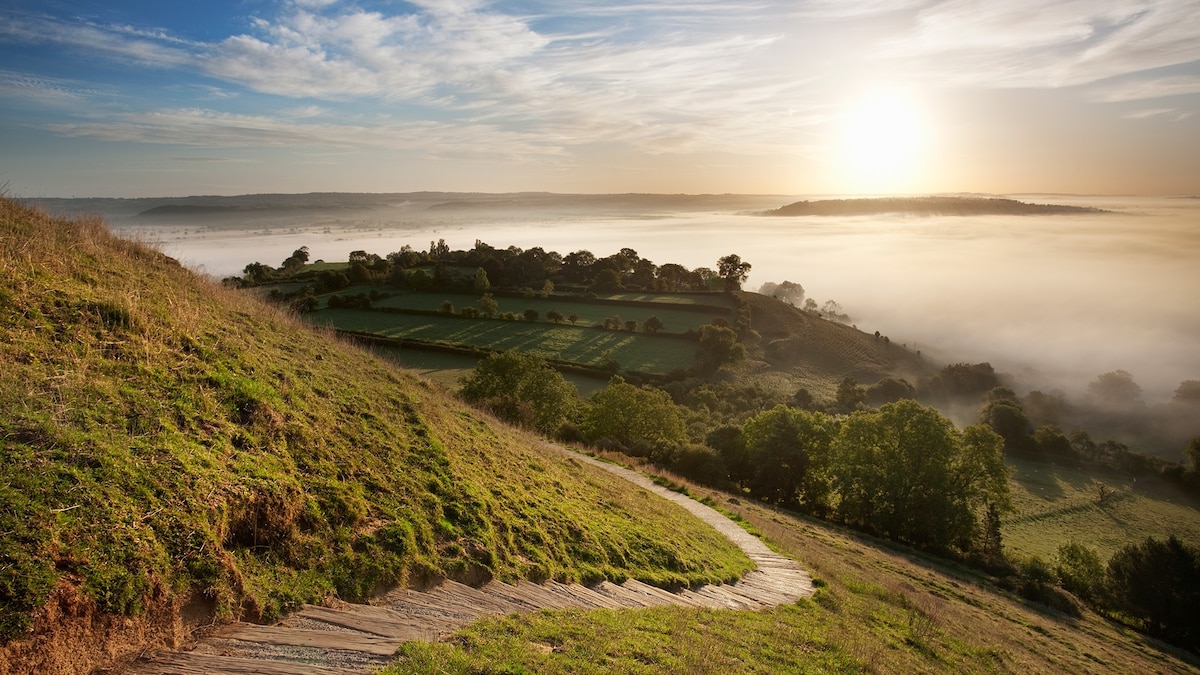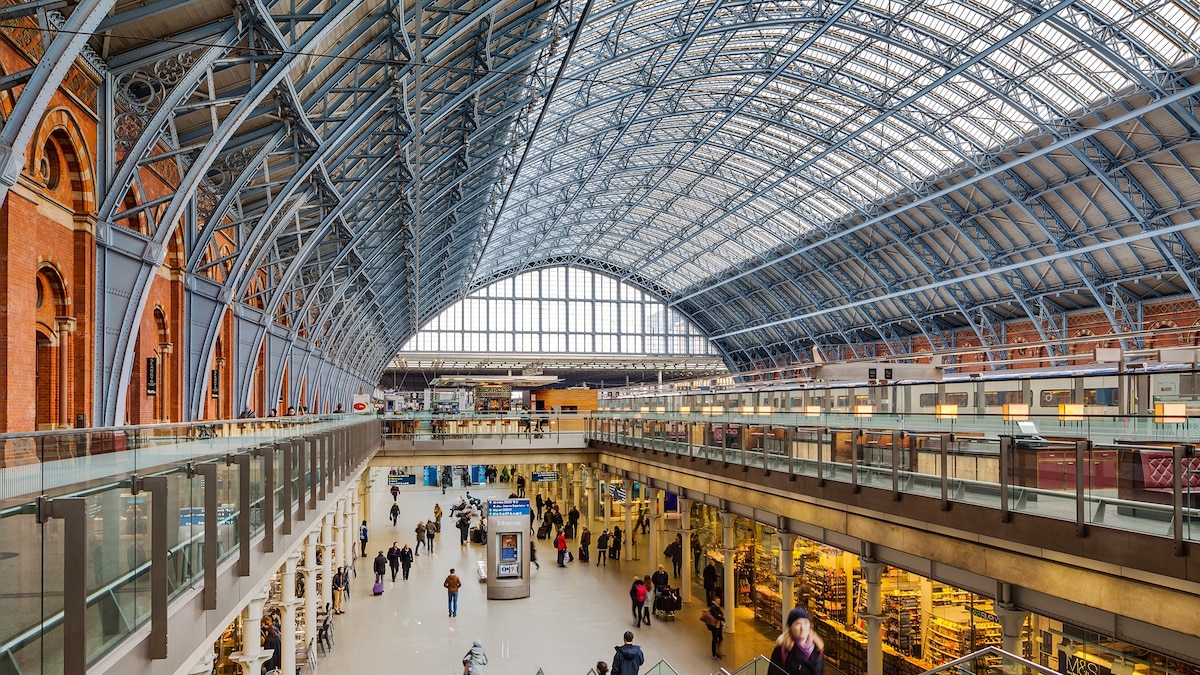Now Reading: How to experience northern Somerset without a Glastonbury ticket
-
01
How to experience northern Somerset without a Glastonbury ticket
How to experience northern Somerset without a Glastonbury ticket

This article was produced by National Geographic Traveller (UK).
For decades, Somerset was chiefly famous for three things — cider, cheddar cheese and ‘scrumpy and western’ band The Wurzels, whose musical homage to the combine harvester landed them a 1976 number one. Glastonbury Festival’s rise to prominence gradually shifted the dial on the county’s profile — taking it from agricultural to alternative and, latterly, decidedly cool. Those who visit today will find it a delightful mix of all three.
The northern half of the county borders the city of Bristol but offers dramatic rural landscapes in abundance. Cheddar Gorge in the Mendip Hills is the closest thing the UK’s got to the Grand Canyon, while the Somerset Wetlands National Nature Reserve — England’s third largest — extends from the windswept coast at Bridgwater Bay to the atmospheric Avalon Marshes. One theory about the origin of Somerset’s name is that it has roots in the Old English word Somersæte, meaning ‘summerlands’ — historically, winter flooding would likely have rendered it mostly uninhabitable over winter. In the intervening centuries, thriving market towns like Frome and villages constructed from honey-hued stone have emerged among the wilds.

Hop off the train at Castle Cary and you’ll find The Creamery, the track-side restaurant with elevated pub grub.
Photograph by Newt in Somerset

The Creamery is run by the Newt hotel, housed in a restored dairy which still makes its own cheese.
Photograph by Newt in Somerset
The summer music festival to which Glastonbury gave its name actually takes place on farmland six miles east, with the town itself embracing a quieter, more spiritual way of life. Its abbey is said to be the burial place of King Arthur himself, while its high street is a centre of New Age mysticism, featuring its own witchcraft emporium and countless incense-scented shops offering tarot readings and healing crystals. By contrast Bruton, with its clutch of farm-to-table restaurants and cutting-edge arts spaces, has become a byword for Somerset’s new era. In between, endless one-pub settlements provide a reliably warm West Country welcome.
Where’s the best place for food?
Railway stations aren’t ordinarily associated with culinary excellence — but Castle Cary bucks the trend. Opened last summer, track-side restaurant The Creamery is run by the nearby Newt hotel — generally considered one of the best in the country — and housed in a restored dairy which still makes its own cheese. The halloumi-style Sutton Brue is just one highlight from its menu of elevated pub grub, served at booth-style tables in an exquisite, green-tiled interior.
While you’re here, it would be remiss not to sample Somerset’s finest exports direct from their source. Westcombe Dairy supplies Neal’s Yard and offers tours — be sure to request a demo of its cheese wheel-flipping robot, ‘Tina the Turner’ — and tastings of its clothbound cheddar or creamy ricotta, both made from raw milk produced by its own cows. Add a sourdough loaf from Landrace Bakery next door, and you’ve got the makings of a picnic. Next, drive 40 minutes west to Wilkins Cider in Mudgley, where you’ll likely find Roger Wilkins in the farmyard, ever ready to serve up a jar and a yarn.

The hill of Glastonbury Tor is considered an important pagan site, making it a popular place to see in sunrise on the morning of the summer solstice: 21 June.
Photograph by Getty Images, Barbara Neal
Tell me where to head for mind-expanding, festival-like fun.
Get your bearings at Glastonbury Tor, which has views over the Somerset Levels and into the neighbouring counties of Wiltshire and Dorset. It’s a steep half-hour hike to the top, so pause awhile among the ruins of the 15th-century chapel of St Michael. The hill is also considered an important pagan site, making it a popular place to see in sunrise on the morning of the summer solstice: 21 June. After descending, stop for a hydrating sip of the iron-rich waters at Chalice Well, set within peaceful gardens.
It’s a half-hour drive east to Bruton — after exploring the town’s slender high street, filled with gabled houses and independent shops, head to the outskirts to visit Hauser & Wirth at Durslade Farm, a contemporary art gallery set among the restored stone buildings of a working farm. After taking in the exhibits and sculpture-filled perennial garden, head to the Roth Bar: part site-specific work, part purveyor of coffee and cocktails.

The Swan combines a neutral palette with countryside charm and wallpaper etched with birds that evoke Somerset’s famous starling murmurations.
Photograph by James Eastham
Where’s a good place to stay?
At striking distance from both Wilkins Cider and Cheddar Gorge, The Swan at Wedmore is a restored 18th-century coaching inn with exceptionally friendly staff (from £98, B&B). Its spacious garden, edged by tall trees, is a delightful place to while away a sunny afternoon sampling local ales and wood-fired sourdough pizzas topped with Glastonbury mozzarella. When night draws in, retreat to one of the seven rooms upstairs, which combine a neutral palette with countryside texture — quilted coverlets, traditional florals and wallpaper etched with birds that evoke Somerset’s famous starling murmurations. The pub downstairs comprises a cosy bar and separate dining room, where menus make abundant use of the area’s culinary calling cards — there’s also a pop-up weekend bakery, which sells stellar sausage rolls and artisanal bread made over at sister property At the Chapel in Bruton. If you’re keen to replicate the festival experience and sleep under canvas, consider booking one of the three safari-style tents at Hadspen Glamping, just south of Bruton (from £200, two-night minimum stay).
How to do it
There are direct trains from London, Plymouth and Bristol to Castle Cary, the closest mainline train station to Glastonbury, but as the region is mostly rural, you’ll have more freedom to explore with a car.
To subscribe to National Geographic Traveller (UK) magazine click here. (Available in select countries only).























